The character on the right, Hesomaru, is the mascot of Furano. The ‘face’ is drawn on his rather large belly while is head and arms are hidden under the hat. Heso means tummy button, while maru refers to its rather large round size. The name reflects Furano’s location in the geographical centre of Hokkaido.
Continuing my search for available and acceptable films in Japan in place of the very expensive FP4 I decided to give AgfaPhoto APX 100 a try. I traveled to Furano, a city with a declining population now just over 20,000. Migration to the bigger cities is now threatening Furano with the closure of its railway line, likely to lead to even greater migration, increasing pressure on the capital city and increasing the use of cars in the countryside with all the associated problems of city crowding, cost and pollution. When I arrived it happened to be the “heso matsuri” (tummy button festival). The festival seemed more subdued than I remember it years ago perhaps reflecting the weather. The day was overcast, generally flat cloudy bright lighting so unfortunately not the best for photography. I had brought my M3, 50mm Zeiss Planar lens, and I metered incident light with a Sekonic meter.
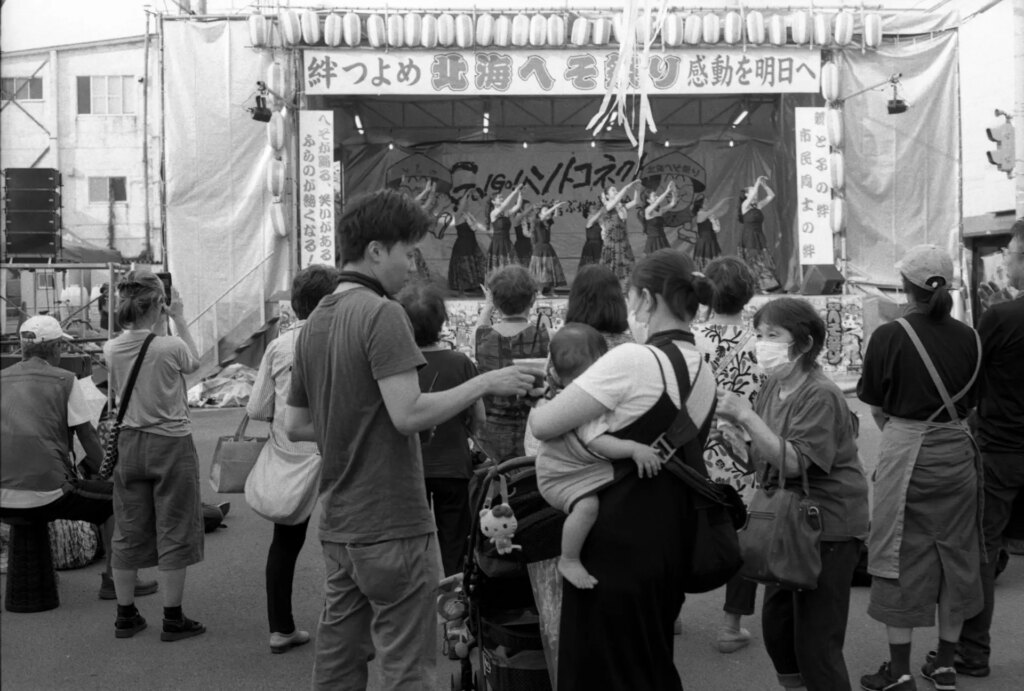
Not quite sure why Hawaiian dancers, but the local TV and newspaper turned up to record the event.
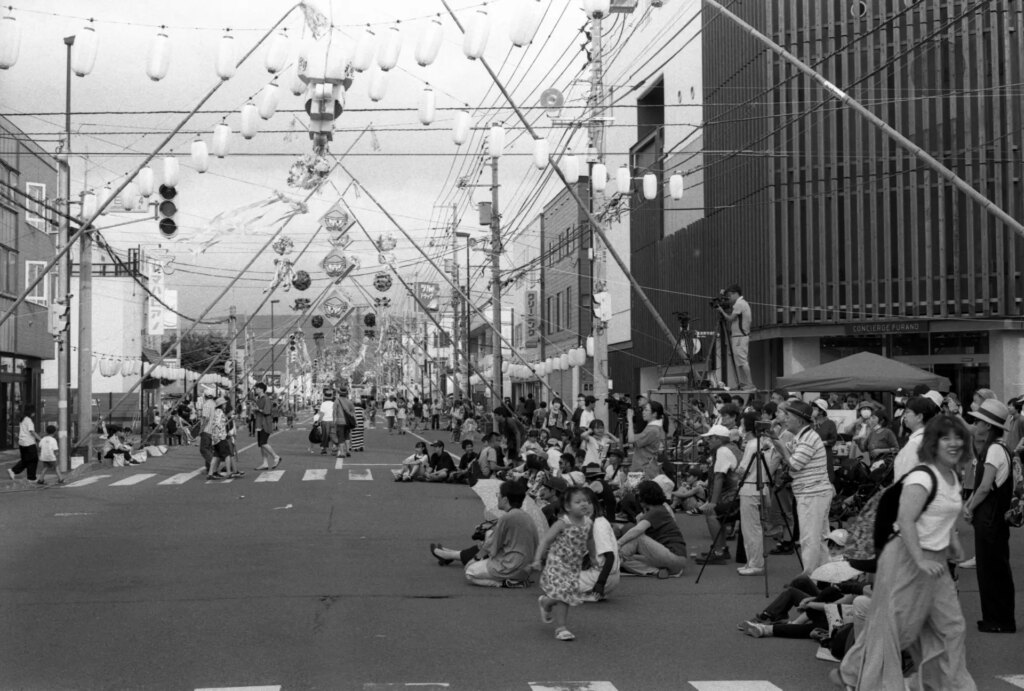
Most of the audience is teenagers or middle aged couples with young children, I don’t really fit in here! So I set off to try the film on subject matter more to my liking. Film was stand developed in Rodinal, scanned as a generic film on an Epson GT-X900 using VueScan software without any automatic adjustments. The first two images (above) are straight scans, and the two following have slightly modified contrast curves.
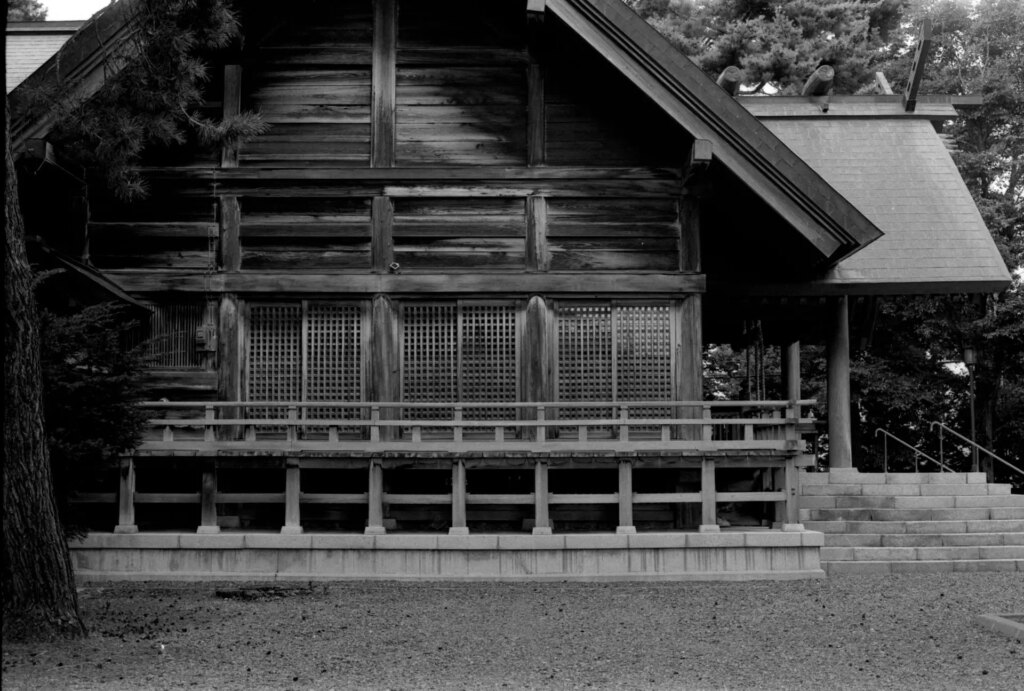
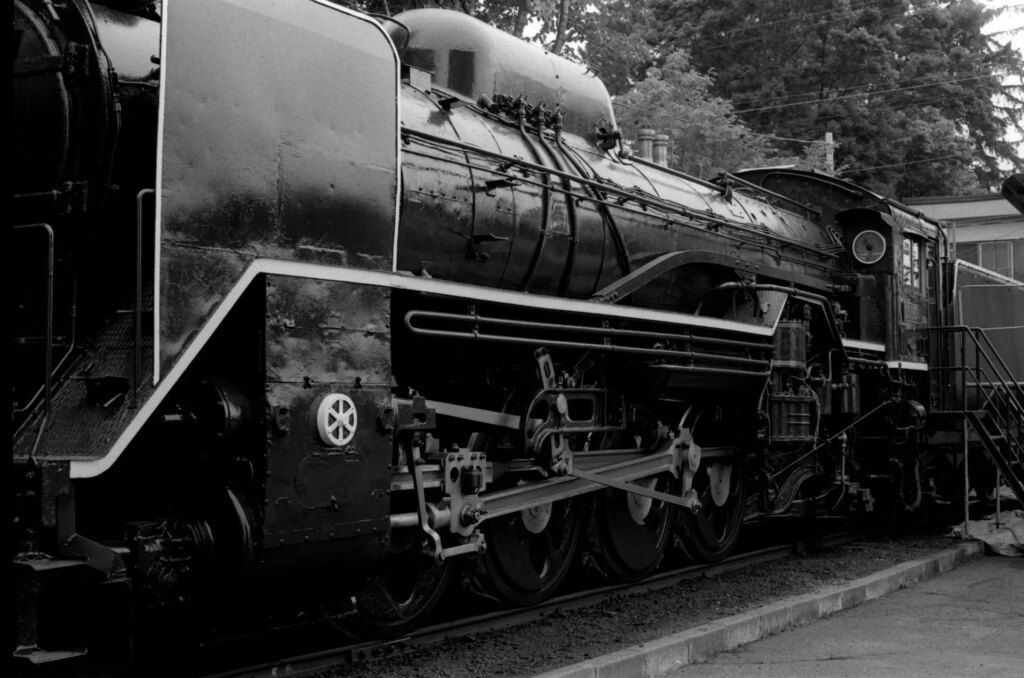
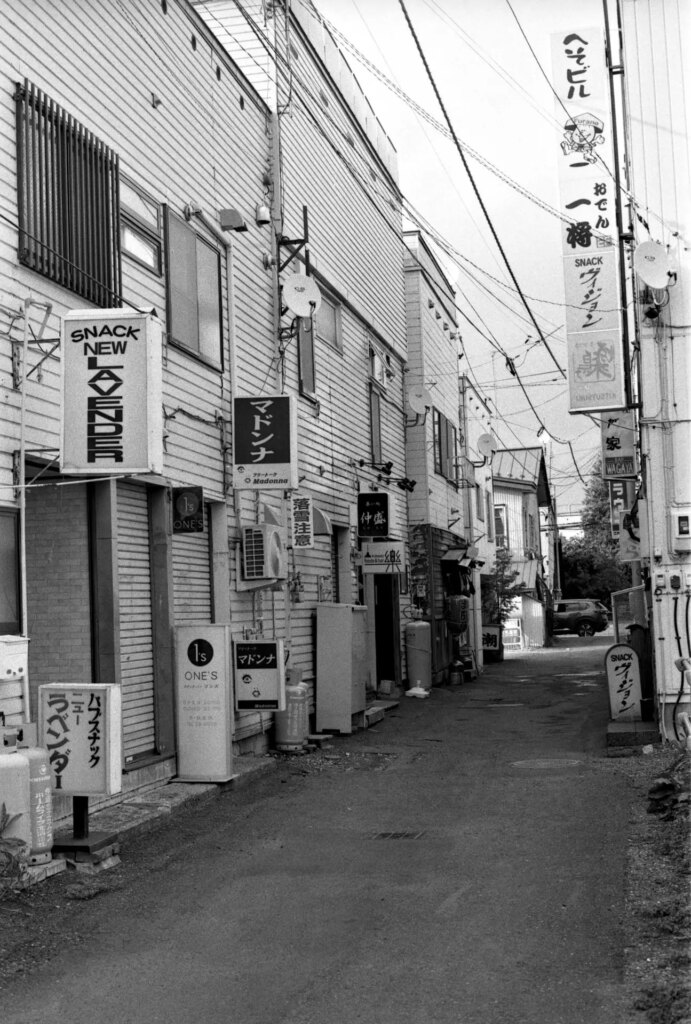
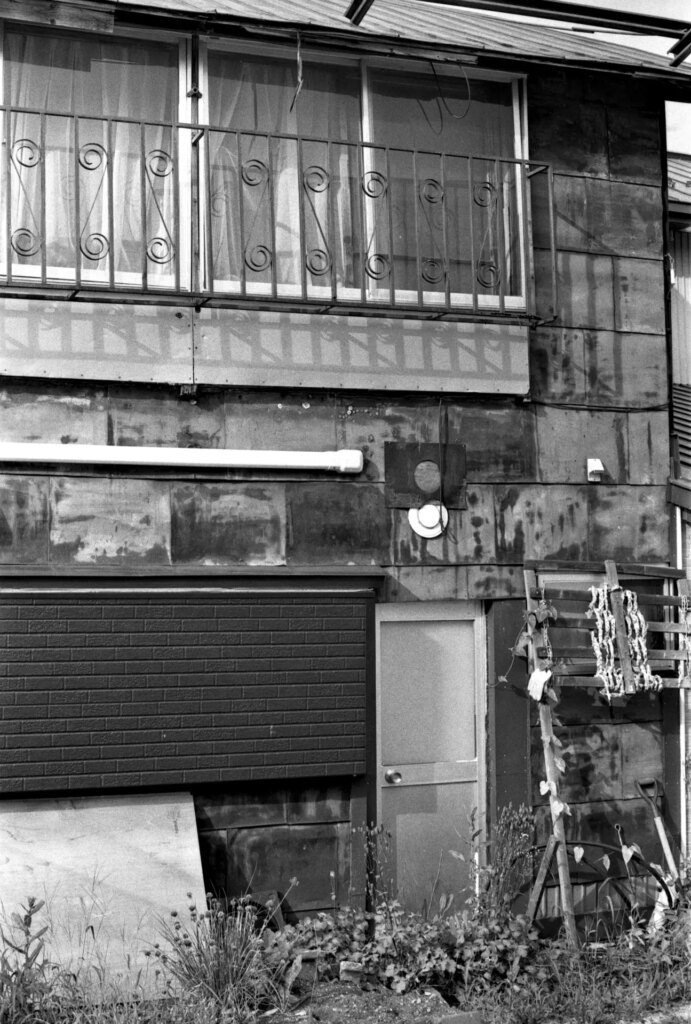
Torisei is the new home for a fried chicken restaurant, having moved from a tiny old characterful building. Not my choice of meat, on the rare occasion when I choose meat but they also have salads, and the all important chips – French fries for non-English speakers ;-), But there’s an overwhelming reason why I go there. When I first went more than 10 years ago I noticed there were several rather unexciting wines offered alongside the unexciting chicken. I asked if there was a wine list – expecting that of course there was not. To my surprise the owner brought a hand written price list each item showing the years when its best to drink and two prices, his purchase price and what he thought he might sell for – he hadn’t really yet decided to sell regularly. You still need to ask for the list, now printed, with just one price. Castro era rum? We got it. Rare malts? A long list. Fine red Burgundies, left and right bank first growth Bordeaux – four pages. World wines, many. Recommended.
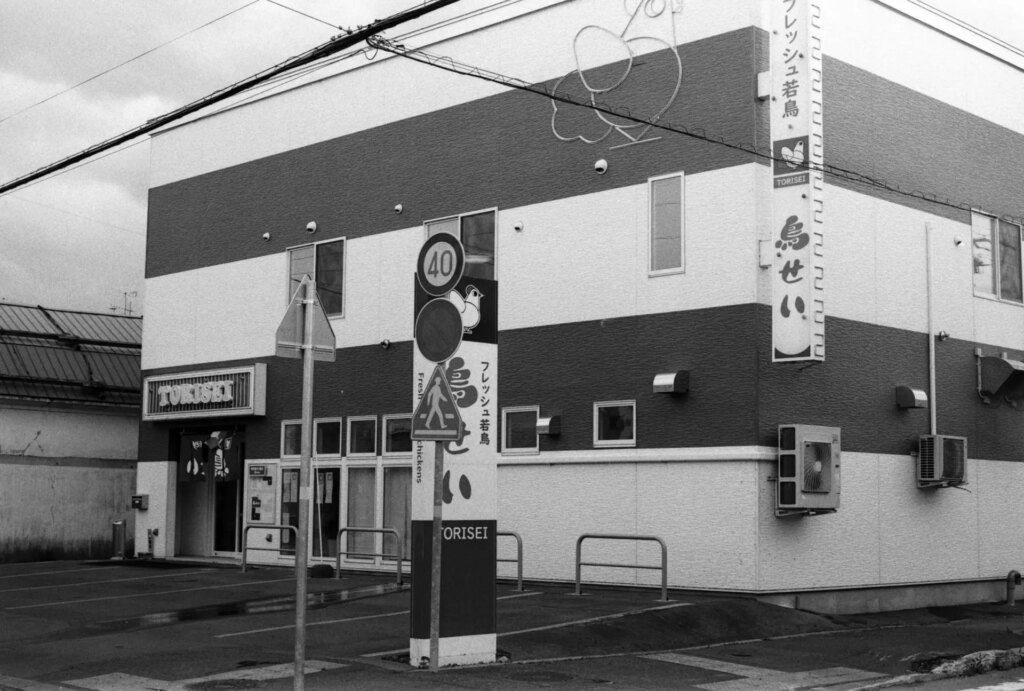
There’s a range of other restaurants including sushi, and izakaya offering a wider range of foods, although modern Japanese are predominantly meat eaters. Yamadori is also a yakiyori (grilled chicken, and other meat) restaurant in a repurposed traditional stone warehouse.
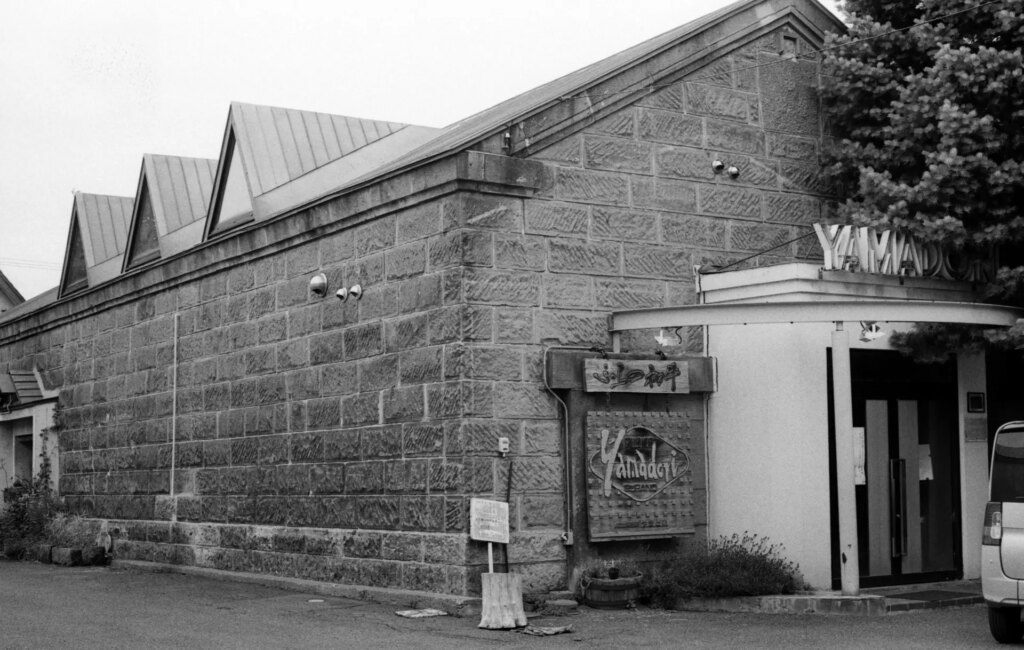
Finally an ornamental lantern in a traditional garden.
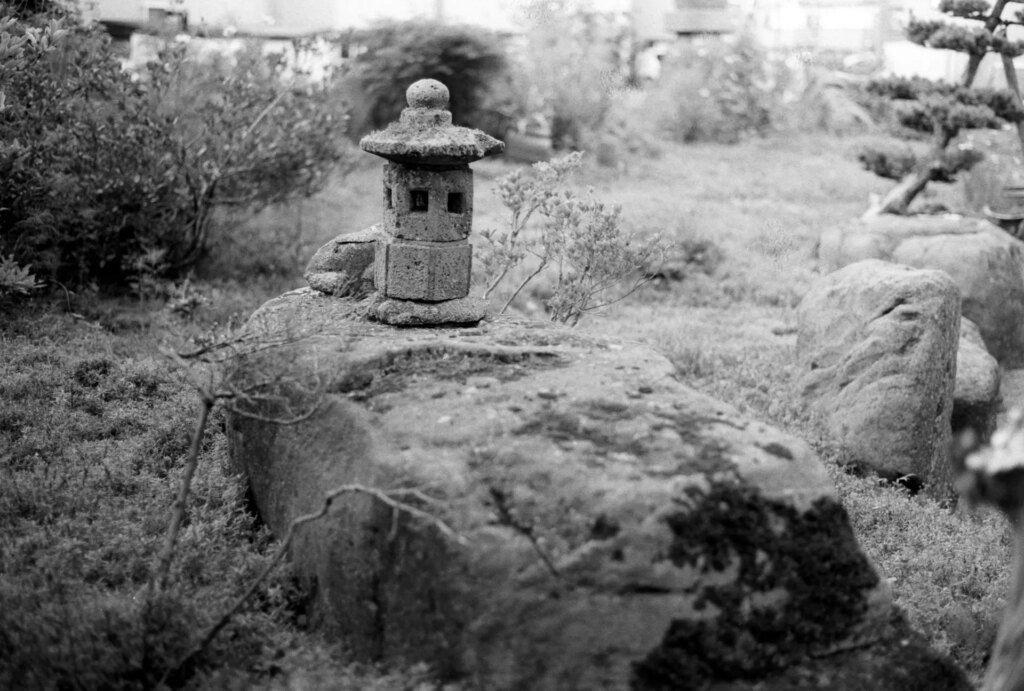
The film is fine grained and I’m impressed by the contrast, detail and image rendition in the mid tones in particular – I’d be happy to use it for my type of subject matter. I struggled to recover any information on a photo of a shed interior – though more detail can be extracted in the train image at the loss of realism. Highlights were less impressive I thought, but I’ll happily avoid those anyway. The film I bought says “Made in UK” on the box (presumably by Ilford); it loads onto plastic reels easily and dries flat. Exposed at box speed with 60m semi-stand development in Rodinal 100:1 makes AgfaPhoto APX 100 a perfectly acceptable film for my purposes.
Share this post:
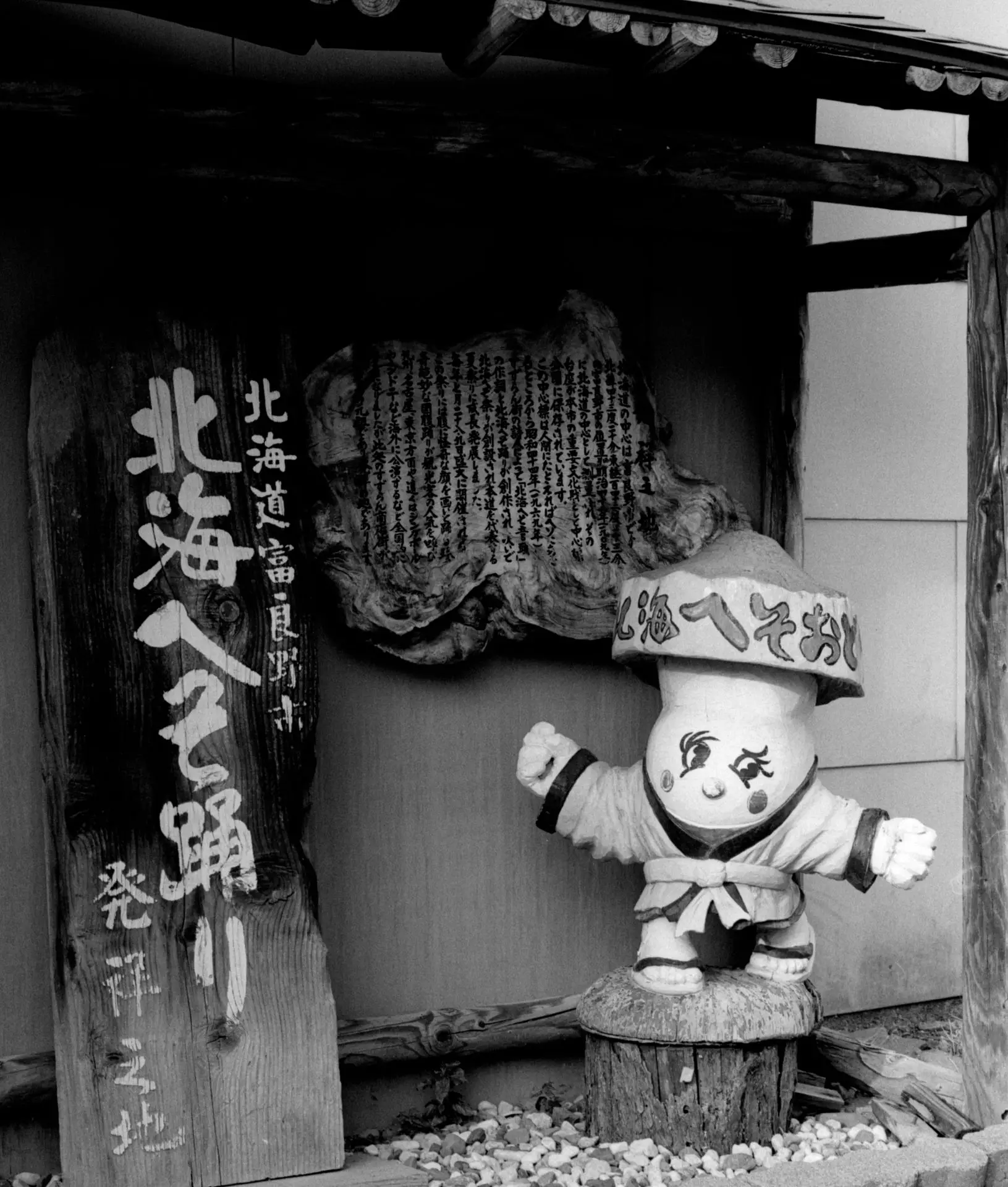








Comments
Uli Buechsenschuetz on AgfaPhoto APX 100 in Furano, Hokkaido
Comment posted: 26/09/2023
Maybe someone has more in-depth knowledge to confirm that?
Comment posted: 26/09/2023
Jukka Reimola on AgfaPhoto APX 100 in Furano, Hokkaido
Comment posted: 26/09/2023
I liked your shots, especially the Furano shrine and the locomotive. Great detail and nice tones. That Torisei restaurant is also interesting. The building looks more like dry cleaners, that a well stocked restaurant. Shouldn´t jugde by the cover, I guess.
Comment posted: 26/09/2023
Eric N on AgfaPhoto APX 100 in Furano, Hokkaido
Comment posted: 26/09/2023
One of my next projects will be to take another roll of APX and shoot it with an Agfa Selectonic SLR and an Agfa (Pentax K mount) lens, for an Agfa-Agfa-Agfa combo.
Comment posted: 26/09/2023
Comment posted: 26/09/2023
Julian Tanase on AgfaPhoto APX 100 in Furano, Hokkaido
Comment posted: 27/09/2023
Very good and predictable results with this film in either Rodinal or D76/ID11, and the film dries flat and scans beautifully. I usually buy in bulk rolls of 30.5 meters and reload, and that is true for almost all the film types I use these days. I am not necessarily looking for cheap, but to consistency, as it happened that a film bought today will be gone the next.
Again, thank you, and nice to see your work again.
Best regards,
JT
Comment posted: 27/09/2023
Peter Kay on AgfaPhoto APX 100 in Furano, Hokkaido
Comment posted: 28/09/2023
Peter
Comment posted: 28/09/2023
Paul Quellin on AgfaPhoto APX 100 in Furano, Hokkaido
Comment posted: 28/09/2023
Comment posted: 28/09/2023